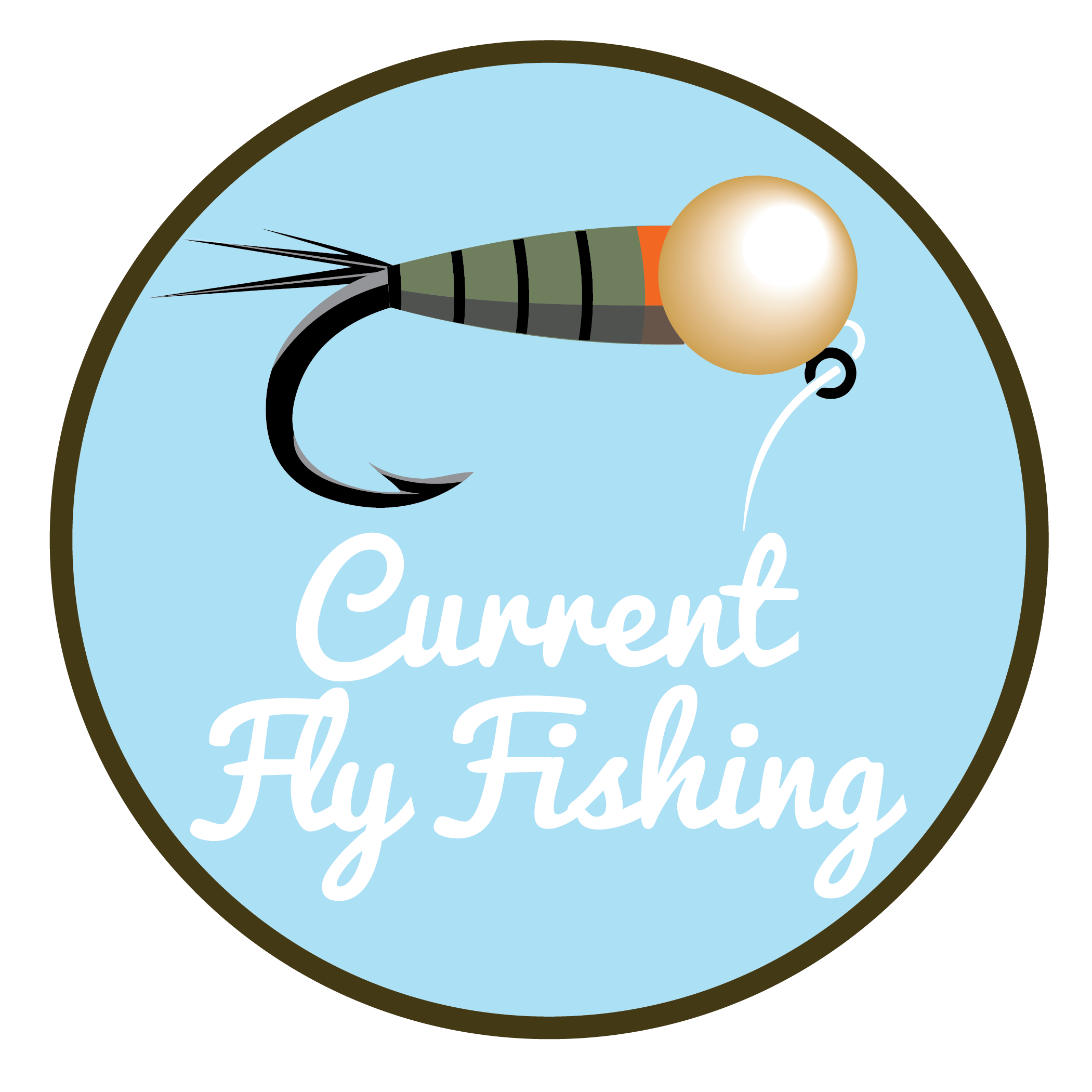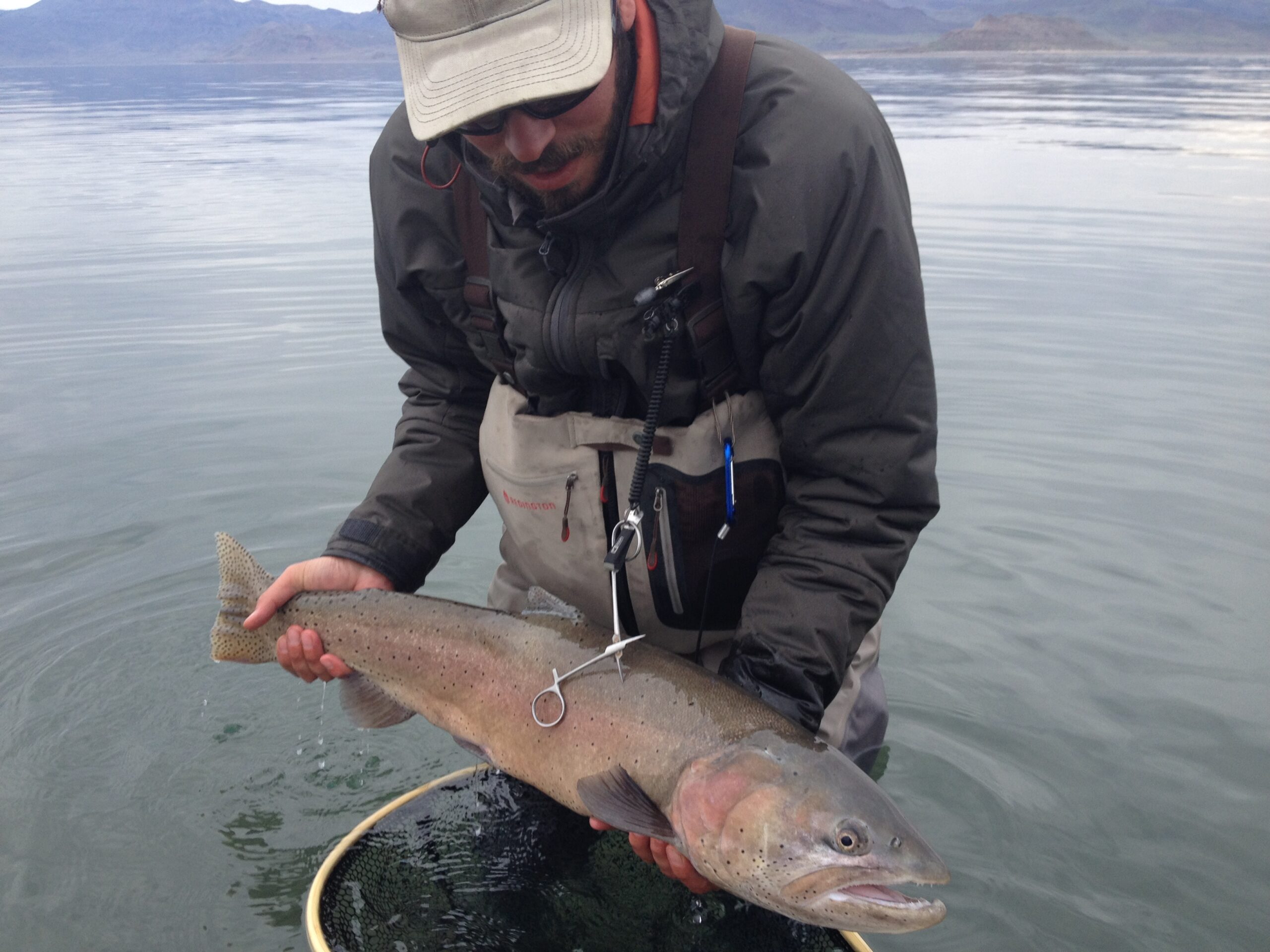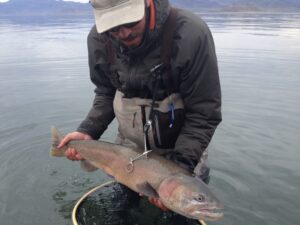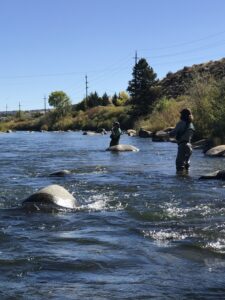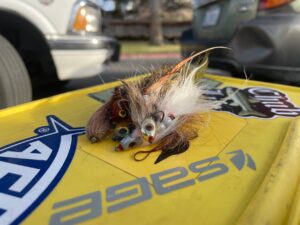A Brief History of the Truckee River Watershed and Current Fishing Regulations
By, Dave Harvey.
Owner/ Guide, currentflyfishing.com
The Truckee River flows 121 miles, passing through forest and desert. Originating as the only outlet of Lake Tahoe, The Truckee losses approximately 2,432
feet of elevation before meeting its final destination at Pyramid Lake. Today The Truckee River is a popular fishing and white water rafting destination. Lake Tahoe is famous for its numerous summer recreation activities and Pyramid Lake is home to some of the largest trout in the world, but it wasn’t always this way. These now healthy and celebrated waterways were so poorly mistreated it drove native fish species to near extinction and led to the degradation of this once pristine area. In this article, we’ll explore some of the past mistakes made by humankind and hopefully finish with a renewed sense of responsibility for the stewardship of our watersheds.
The Truckee River was once named “Salmon Trout River” and for good reason, historically the river was the primary spawning ground for what we know today as the Lahontan Cutthroat Trout. (“Terry Barrons – Guide to Fly Fishing Pyramid Lake 1998”). In 1884 a man named Caleb Greenwood lead a group of travelers up modern-day Donner Pass. They were guided along the way by a member of the Paiute Tribe known as Truckee. Truckee was a name given to him by people traveling west to California, as the story goes while guiding the many groups of travelers over the pass he would often shout “Tro-kay” a Paiute word meaning “everything is alright”. (https://sierratrails.org/the-history-of-truckee/) (https://www.tahoedailytribune.com/news/history-who-were-the-native-americans-of-the-truckee-tahoe-region/) The Greenwood party started calling the river Truckee and the name stuck. This is how the Salmon Trout River became the Truckee River. (“Terry Barrons – Guide to Fly Fishing Pyramid Lake 1998”)
The Paiute people had several names for the large trout that inhabited the Truckee River watershed, depending on what time of year they were found in the river “Tomoo-agaih” or “Hoopagaih” meaning winter trout, and “Tama-agaih” meaning spring trout. (Ira Rivers, Fish and Fisheries of Nevada, 1962 and Sessions S. Wheeler, The Desert Lake, the Story of Nevada’s Pyramid Lake, 1967). The settlers referred to them as “redfish” for the winter variety and “tommies’ for the spring variety. It wasn’t until 1878 when biologists David Star Jordan, Theodore Gilland, and H.W. Henshaw gave them the Latin name “Salmo Clarkii Henshawi” they were more commonly referred to as The Lahontan Cutthroat Trout (LCT). One of the most notable characteristics of the LCT trout is their size. Historically 9-10 lbs fish were very common and 20+ lbs fish were not unusual.
From the 1860s to the 1930s the river and the lake were believed to be an unlimited resource of trout, they were recorded spawning throughout the length of the river and they were being harvested along the way. Fish were being removed by the tons on a commercial scale from both Pyramid Lake and the Truckee River. During this time overfishing was brought to the attention of state governments. Laws were enacted to reduce the rate of harvest but a lack of enforcement made these laws ineffective and the population of the LCT in the river continued to decline. The amount of trout being harvested was astounding, it’s recorded that during the winter-spring season of 1888-1889, one hundred tons of LCT were packaged and shipped by Wells Fargo. Lahontan Cutthroat Trout was traveling by rail all around the country. (“Terry Barrons – Guide to Fly Fishing Pyramid Lake 1998”)
If overfishing wasn’t enough the pollution spilling into the river added to the demise of these fish. Sawmills choked the river with sawdust, it was said at times the river was so thick with sawdust the fish couldn’t even swim. Apart from sawdust, other pollutants were present. Pollutants used to lubricate logging flumes such as tallow, dogfish oil, and rancid butter were making their way downstream. . It’s said there were as many as fifty dams of one sort or another constructed on the river between the town of Truckee and Verdi alone, most of these dams had no fish ladders. By 1875 the native fish stocks above the town of Verdi were so depleted that the California Fish Commission introduced the first non-native fish species to the Truckee River. The Eastern Brook Trout and the Mountian Whitefish were stocked in the river above the Boca confluence. The new residents were successful with limited competition from native fish species. In the years to come the German Brown Trout, McCloud River Rainbow Trout, and Kokanee Salmon were introduced to the river and the surrounding waterways. (Gordon Richards, Demise of the Lahontan Cutthroat Trout, originally appeared in April 30, 2004, Echoes From The Past column in the Sierra Sun.)
At this point, The Lahontan
Cutthroat Trout were still able to get up the Truckee River to spawn as far as Verdi. In 1905 the Army Corp of Engineers constructed the Derby Dam. The Dam sits 30 miles upstream of Pyramid Lake and was built in an attempt to bring electrical power and irrigation water to the Fallon area via a canal. Although a wooden fish ladder was built into the construction of the dam it never functioned properly. This structure restricted the spawning habitat of the LCT to the lower 30 miles of the river. In the coming years, water would be diverted from the river and the level of Pyramid Lake would drop, couple that with years of drier-than-average precipitation and you’ll find a river mouth choked by silt and impassable by trout trying to get up the Truckee River to spawn. (“Terry Barrons – Guide to Fly Fishing Pyramid Lake 1998”)
This was the situation from the 1920s into the early 1930s. As a result, there was little to no spawning during that time in the river. This led to a lack of young fish coming back to the lake, and as a result, the remaining fish in the lake grew to gigantic sizes. Ironically Pyramid Lake was thought to be as healthy as ever and became one of the most popular recreational fisheries in the United States, known for its huge trout it attracted famous people like Herbert Hoover and Clark Gable. The International Game Fish Association (IGFA) All-Tackle World Record for the largest Cutthroat Trout still stands today at 41 pounds it was set in 1925 by a native Paiute man named
John Skimmerhorn. Pyramid Lake was heavily fished and by 1940 the Lahontan Cutthroat Trout were gone and thought to be extinct. The story of their recovery is a great environmental success and one for another article.
The Truckee River would continue to face many threats posed by turn-of-the-century industrialization. It wouldn’t be until the 1950s that the problems that plagued the river diminished. Paper mills had closed, dams washed away, the sawdust had cleared the system and the fish and wildlife laws became stricter and were being enforced. (Gordon Richards, Demise of the Lahontan Cutthroat Trout, originally appeared on April 30, 2004, in Echoes From The Past column in the Sierra Sun.)
Even so, the native Lahontan Cutthroat Trout were gone. In their absence, the non-native introduced fish species adapted to their new home.
The present-day Truckee River is mainly comprised of Rainbow Trout, Brown Trout, and Mountian Whitefish. The Nevada Dept of Fish and Wildlife does stock LCT in some of the lower sections of the river with limited success on year-over-year survival rates. To effectively return the river to its previous glory will require a great effort and collaboration on the part of the State Depts of Fish and Wildlife, Local Native American Tribes, and the general public.
Below are the current fishing
regulations for the Truckee River for both the California and Nevada side as well as Pyramid Lake as laid out by the Pyramid Lake Paiute Tribe. It is extremely important for an angler to remember that each state or government entity mentioned above requires its own fishing license for its respective waters. It’s also worth noting that the laws for what kind of tackle can be used, the limit of fish to be kept, and the time of year fishing is allowed is unique to that specific area. All fishing regulations must be followed by anglers of all ages however licensing age requirements are as follows, California 16 years old, Nevada 12 years old, and Pyramid Lake 12 years old.
Truckee River California;
Truckee River (Nevada, Placer, and Sierra cos.)
(A) Truckee River for 1,000 feet below the Lake Tahoe outlet dam. Closed to all fishing all year.
(B) Truckee River from the confluence of Trout Creek downstream to the mouth of Prosser Creek. Open all year. Only artificial flies with barbless hooks may be used. 0 trout can be kept
(C) Truckee River from the mouth of Prosser Creek downstream to the Nevada State Line. From last Saturday in Apr. through Nov. 15. Only artificial lures may be used. 2 trout can be kept.
From Nov. 16 through the Frida
y preceding the last Saturday in Apr. Only artificial lures with barbless hooks may be used. 0 trout can be kept.
(2023-2024 California Freshwater Sport Fishing Regulations booklet reg (153) pages 76, 77)
Truckee River Nevada;
Truckee River (Storey and Washoe cos.)
Season open year around, any hour of the day or night, except in that portion from Derby Dam downstream 1,000 feet, which is closed to fishing.
3 game fish except in that section from E Mustang Road bridge (I-80 Exit 23) downstream to Derby Dam and from 1,000 feet downstream from Derby Dam to the Pyramid Lake Paiute Reservation boundary where the limit is three gamefish of which 1 may be trout.
Special Regulations: In that portion from E Mustang Road bridge (I-80 Exit 23) to Derby Dam and from 1,000 feet downstream of Derby Dam to the Pyramid Lake Paiute Reservation boundary, only artificial lures with single barbless hooks may be used.
(2022 Nevada Fishing Regulations Booklet pages 46, 47)
Pyramid Lake;
You do not need a State of Nevada Fishing License, just a Tribal Fishing and/or Boating Permit.
Boats are required to have current registration from their respective state.
Barbless hooks only. We are concerned only with what hooks you have in the water, not your tackle box. You can have 2 singles, 2 doubles, or 2 treble hooks per lure.
No Bait. No worms, eggs, scent, Power bait or like products, or any organic matter on your hooks.
Slot sizes. Keepers are 17 to 20 inches or over 24 inches. All other sizes must be returned to the water. You may keep 2 of the smaller sizes or 1 small and 1 large.
One stringer per fisherman, no sharing of stringers.
Do not fillet the fish on the Reservation. Rangers need to verify the proper size.
You can fish 1 hour before sunrise and 1 hour after sunset.
Highly recommend boaters have a marine band radio on board. The Ranger Station monitors Channel 16. Coast Guard considers marine band radios as an essential part of your boat safety equipment.
No fishing off the docks. Fishermen fishing off the docks present a safety hazard to boats launching
and docking, and to the fisherman.
Closed areas to fishing and boating:
1,000-foot radius around the mouth of Marble Bluff Fish Way
1,000-foot radius around Sutcliffe Fishery spawning channel
C. 1,000 feet from the shoreline of Needles from Wizard Cove to Fox Bay
D. The Truckee River and Delta
E. Boats need to stay 250 feet from shoreline fishermen
Lahanton Trout Season runs from October 1 thru June 30.
(https://pyrami
dlake.us/fishing)
For more detailed information on Pyramid Lake regulations see the PYRAMID LAKE PAIUTE TRIBE REGULATIONS BROCHURE
